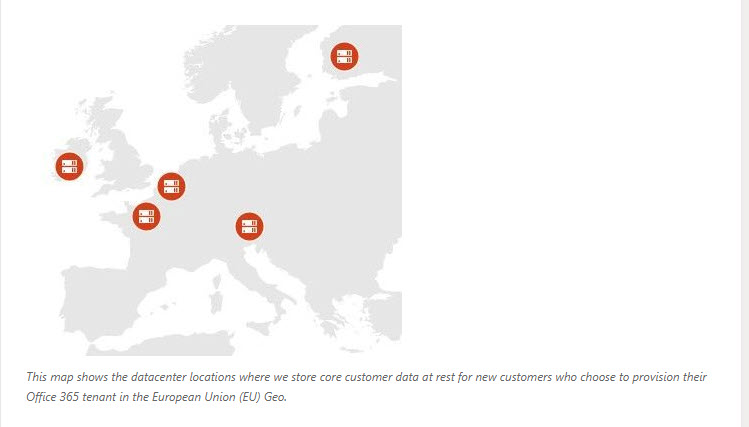Yammer Supports EU Data Residency with No External Collaboration
Yammer Meeting Some of its Goals
Among the many announcements made by Microsoft at the SharePoint Conference was one about in-geography storage of Yammer messages at rest for new European Union customers. We knew a move to ensure better compliance with customer data residency wishes was coming because it was a commitment made at Ignite 2018. Another commitment was to surface Yammer messages through Microsoft Search, which is now supported in Microsoft Search by Bing.

Bringing a European Dimension to Data Storage
On the surface, Yammer appears to be moving towards its goal of being more integrated with Office 365 and all is well. That is, until you look at the details of what Microsoft proposes for new European Union customers. If you decide to locate your Yammer message data in Europe, the list of unsupported features is quite extensive:
- All external collaboration features:
- Only users in your Office 365 tenant can participate in your Yammer Enterprise network.
- External guests can’t participate in your Yammer Enterprise network.
- Your users can’t participate in other Yammer networks, including external networks.
- Your users can’t be participants in external messaging threads, or add external participants to threads in your Yammer Enterprise network.
- External groups can’t be created in your Yammer Enterprise network, and your users can’t participate in external groups belonging to other networks.
- Post to Yammer by sending an email message
This list is for Yammer messages. Other data, like documents shared in Yammer groups, are stored in the SharePoint team site owned by the underlying Office 365 group.
No External Collaboration
In effect, these Yammer tenants are purely inwards facing with no ability to communicate externally. Losing external collaboration through Yammer might be an acceptable trade-off to gain control over data residency if your organization uses email for outbound communication. But when you think about the situation, it’s odd how locating a Yammer network in the European Union subtracts functionality unlike any other Office 365 application. You don’t see the same with SharePoint Online, OneDrive for Business, Exchange Online, or Teams, all of which happily run in different Office 365 datacenter regions around the world.
Checking Your Network
All existing Yammer networks are in the U.S. If you want to be sure, log in as an Office 365 Admin and choose the Network Admin option to view information like that shown in Figure 2.

Architectural Boundaries
I suspect that these restrictions come from the nature of the Yammer application, which has always been firmly centered in U.S.-based datacenters. Yammer never seemed to pay much attention to data residency until last year and substantial effort might have been needed to alter Yammer’s architecture to cope with deployments in different regions.
Exchange Online and SharePoint Online have always run in multiple geographies. Exchange uses forests to divide its work up across region and SharePoint uses farms. Both support tenants with users in different geographies. Teams, which is also a cloud-only application, was designed for deployment in multiple datacenters, perhaps because Microsoft knew how design decisions could cause problems when the time for worldwide deployment.
In any case, we are where we are with Yammer. Companies who really want to or must have their messages stored in the European Union can now do so, but only if they have a new Office 365 tenant. At least, there’s no way described to switch an existing Yammer network from being U.S.-based to E.U.-based.
Stick with the U.S. for Now
Moving workload from one Office 365 datacenter region to another tends to be a long-drawn-out process. Great care must be taken to ensure that no data loss can occur, which is why it usually takes so long. At least, that seems to be the case for multi-geo deployments or when Microsoft opens a new datacenter region and offers existing tenants the chance to move into the new region. Yammer might never be able to move a tenant from the U.S. geography to the E.U. And given the list of restrictions, this E.U. tenant is quite happy to stay put for now.




